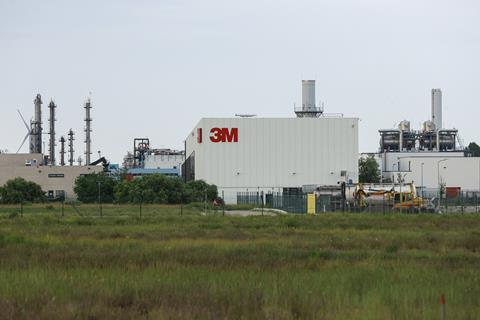The global chemicals sector is reacting to economic pressures by cutting thousands of jobs to save on costs. Dow’s plan to save $1 billion (£826 million) in 2023 includes laying off about 2000 people from its global workforce. 3M plans to cut 2500 jobs globally, predominantly in manufacturing. Other companies in the sector also plan cost-cutting measures, with job layoffs.

Dow said it will close some manufacturing facilities, especially in Europe. This is partly a response to sluggish economic growth and a fall in sales. The company noted economic uncertainties and challenging energy markets, particularly in Europe, where energy uncertainty spiked due to Russia’s invasion of Ukraine. ‘In the second half of the year, economic conditions deteriorated driven by record inflation, rising interest rates, ongoing pandemic lockdowns in China and continued geopolitical tension,’ chief executive James Fitterling said on a 26 January earnings conference call.
Dow was one of the first big chemical companies to report financial results for the full year 2022. Dow’s filings with the US Securities and Exchange Commission show a sharp fall in income (before income taxes are applied) of 25% relative to 2021. Similarly, 3M’s income (before income taxes) is down 11% on 2021, and the company is predicting a decline in sales and profits for 2023.
Across the chemicals sector, many other companies are implementing similar cost-saving plans. Goodyear Tire & Rubber – headquartered in Ohio, US – is shedding 500 jobs, around 5% of its workforce, noting weak demand in the fourth quarter of 2022, as well as rising energy costs, especially in Europe. In October 2022, BASF began a cost-cutting programme that aims to provide €500 million (£444 million) in savings annually, with a focus on Europe. More than half of the cost savings involve its massive site in Ludwigshafen, Germany.
The European Chemical Industry Council (Cefic) warned at the time that European chemical businesses were in survival mode, struggling to compete in a global market against businesses in regions with more favourable energy prices. Nevertheless, company earnings on both sides of the Atlantic seem to have taken a hit in the final quarter of 2022. ‘Basically, 2022 was actually looking pretty good [for these companies], for the most part, up until the fourth quarter,’ says Katherine Olexa, equity analyst at Morningstar, who closely follows Dow, BASF and LyondellBasell. ‘But then there were [as two examples] extreme weather events and gas prices went crazy due to the energy crisis in Europe.’ Revenue at Dow, for example, dropped by almost 20% year-on-year in the fourth quarter.
Sluggish economic growth is a concern for these companies, she adds, as they make the chemicals that go into so many industrial and consumer goods: ‘These three [companies] are sort of a proxy for GDP growth, because they touch so many different end markets.’ The predictable response has been to trim costs and optimise processes: ‘A lot of the challenges they’ve been facing have been beyond their control.’
LyondellBasell highlighted price pressures and weaker demand in petrochemicals markets in the fourth quarter of 2022, though lower prices were partly compensated for by moderating energy and feedstock costs. The firm has not indicated it will be cutting jobs.
European chemical manufacturers, though, are burdened by more expensive feedstocks. ‘North American firms have a very strong cost advantage because natural gas in the US is very, very cheap,’ says Olexa. Many European manufacturing facilities rely on naphtha from oil. If the price ratio of Brent crude oil to natural gas sits above seven, that implies a material cost advantage in North America. ‘That ratio has averaged 21 for almost ten years,’ says Olexa, ‘but gas prices have come up quite a bit, and the ratio ended the year at about 16,’ Olexa says.
In December 2022, 3M committed to ending production of all per- and polyfluorinated alkyl substances by the end of 2025. Overall, the company forecasts its total sales will fall by between two and six percent 2023. According to Joshua Aguilar, equity analyst at Mornington Star, 3M’s performance for 2022 has been disappointing. It was affected by lockdowns in China, raw material and supply chain issues, lower consumer spending, as well as falling respirator sales, he notes.
‘The [job] cuts were announced given the weakening and uncertain [macroeconomic] environment on 3M volumes, but the timing I suspect was just an attempt to align the announcement with earnings and get the bad news out contemporaneously,’ comments Aguilar. ‘Guidance points to decelerating sales and earnings,’ he adds, and there could be more restructuring on the way.
The first Cefic Chemical Trends Report of 2023 shows that while declining energy costs provide some relief, ‘we observe high levels of stocks of finished chemicals products and a drop in chemicals demand,’ notes a spokesperson, but economic sentiment is more positive.
In the longer term, Cefic highlights the ongoing challenges as the sector faces its biggest transformation in history: aiming to neutralise its impact on the climate, while transitioning to safe and sustainable chemicals.

















No comments yet